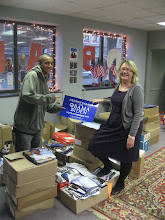Krakow was never high on our hit list of cities when we started planning our breakneck tour of Europe.
I am ashamed to say it only made the itenerary because of its proximity to Oswiecim and the Auschwitz Museum, so when we reached the tram terminus at the outskirts of the city this morning we weren’t expecting much.
We weren’t even very sure where we were heading. The castle? Probably, it seemed churlish not to.
The old town market place? Yes, it was billed as Europe’s largest, but once you’ve seen one town square, you have pretty much seen them all. The Jewish quarter? This was added as a late entry, just in case.
We didn’t even know how to find our tram stop, until a cheery lady in her Sunday best decided to help out. We explained in English where we wanted to go, she explained in very rapid, but very expressive Polish where we should get off, and between us we decided we should disembark at the Filharmonia stop and take it from there.
We didn’t understand a word any of us had said, but we all knew exactly what we meant. I was beginning to like this city.
She gave us the thumbs up when we parted, and off we set to explore Poland’s second city.
Within minutes of getting off the tram we were entranced. The map ripped out our Europe on a Shoestring 1284 page guidebook was, as usual, worse than useless, so we simply meandered along.
First past an exhibition in a park titled “In the footsteps of John Paul II” which seemed nothing less than a not so subtle attempt to persuade Poland that Pope Benedict XVI was a worthy successor to their very own Holy Father.
Then up Wawel Hill for the obligatory castle and cathedral circuit. Then down to Kazimierz, the Jewish Quarter, famous for its association with Oskar Schindler who saved thousands of Jews from the gas chambers, and now re-emerging from its post war isolation as the city’s most run-down area to its hippest.
It has the feel of a slightly down at the heel Greenwich Village, with coffee shops that serve proper espresso macchiato, a street market, antique shops by the dozen, synagogues, churches, there is even a Cuban bar if you like that sort of thing.
We could have stayed there all day but thought we should at least stop by Rynek Glowny, the famous town square.
It is simply stunning, 200 metres square with a 16th century Renaissance building, the Cloth Hall, slap in the middle. Inside you can buy chunks of amber the size of a baby’s fist, traditional Polish dress, or a postcard, depending on your budget – and tastes.
Outside an octet of Polish B-Boys (my husband assures me B-Boys are what people in the cultural know call break dancers) delighted a large crowd with their impossibly agile dance routines.
Children cheerfully queued to sign a giant inflatable football to mark Euro 2008, and everywhere you looked were families, young lovers, tourists, all enjoying the spring sunshine in an atmosphere I can only describe as happy.
Walking back to the tram stop we mulled over our day. Krakow was cracking we agreed, one of the best cities in Europe, how had we missed it?
“We will come back for a longer visit next time,” my husband said as we approached the stop.
And there she was, our lady in her Sunday best who had helped us at the start of the day.
We laughed and hugged each other in our mutual delight at the coincidence.
“Krakow is a beautiful city,” I said. She gave me a big cheery smile of agreement. We understood each other perfectly.
Sunday, May 18, 2008
Subscribe to:
Post Comments (Atom)





No comments:
Post a Comment